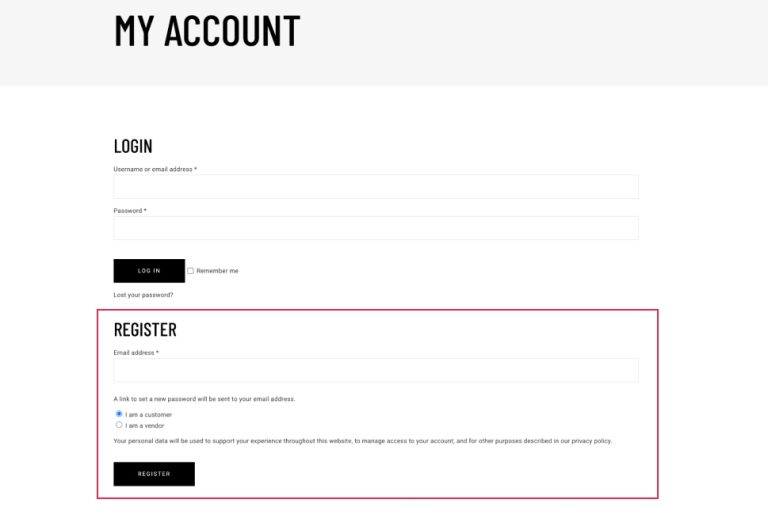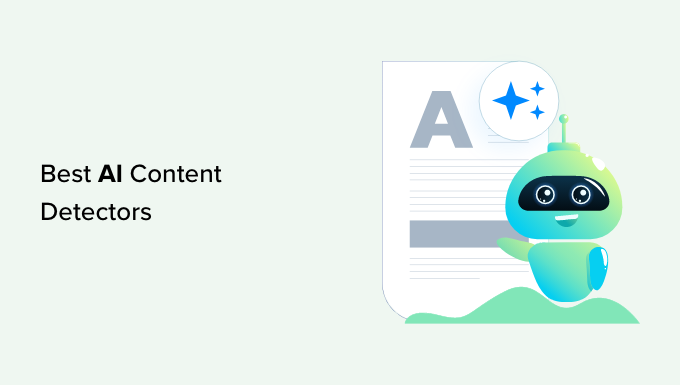A staple of the Internet, email has been around for more than 50 years and yet it is still one of the most popular methods of online communications. The more than 370 billion emails sent per day are a testament of its longevity. Yes, in recent years, email boxes have become more like a gathering spot for advertisements, newsletters, and all other sorts of one-way communication. However, we promise people still use them for talking to each other! That part is not essential, though, as we are here to instead talk about that one-way communication we mentioned. Specifically–email marketing! You can push those images of an overflowing spam box out of your mind because email marketing is not all about spam. Yes, our spam boxes probably say otherwise, so that is why we are writing this blog post. To show email marketing done right!
We want to disperse all those nasty assumptions about email marketing and how it is nothing but a waste of inbox space. In reality, email marketing is an invaluable tool for companies to inform, promote, and engage with their customers. A well-managed email marketing campaign can help a business’ brand and foster trust and respect among its customers. A campaign like that will show the people getting those emails that the company is not there to fill their inboxes or spam boxes. Instead, they send emails to genuinely inform customers about things customers might be interested in. With all that said, read on to find out how to properly set up an email marketing campaign and do it correctly!
The Basics
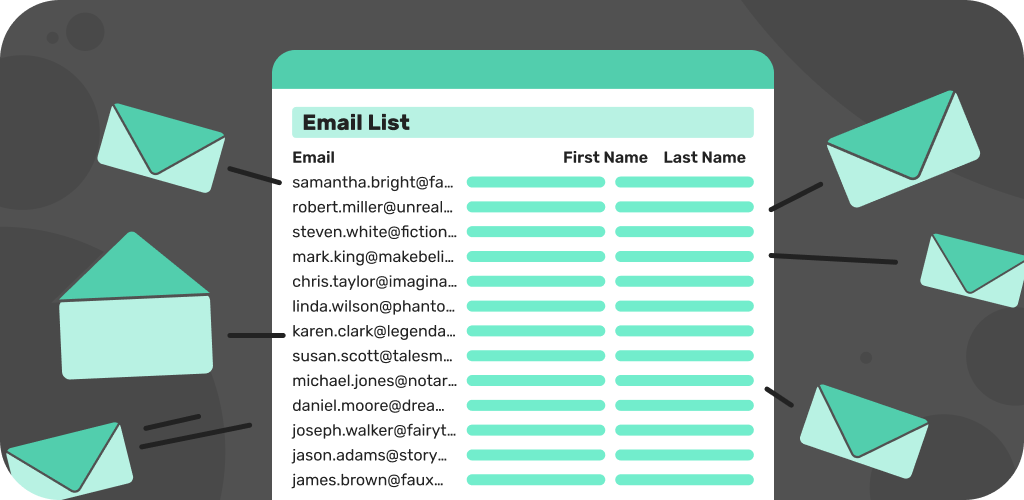
Before we start discussing actual tips and advice for a solid email marketing campaign, we must lay some groundwork. Specifically, there are three things we want to mention as fundamental knowledge about a marketing campaign. Namely, understanding your audience, learning about the different types of marketing emails, and knowing how to build an email list. Having a good understanding of those three things should give you a reasonable, steady platform to start building your marketing campaign on.
If you choose to forego learning what your audience is like, what marketing emails might best suit them, and how to build an email list properly might cause your campaigns to miss more than hit. The shotgun approach does not work with marketing emails. The companies who do that often end up in the users’ spam boxes. It might have been acceptable years ago when we were not as privy to just how annoying an inbox full of spam is. Still, nowadays, most people like to keep things tidy (or just have a whole other email account just for spam because it is inescapable). But before we go into those, let us cover the most basic of basics: what is email marketing?
The answer is straightforward: it is a form of digital marketing employing email messages to inform current and potential customers about new products, promotions, events, news, changes, etc. It is a relatively low-cost method of informing a vast number of customers about the goings-on of your business. With that clarified, let us move on to the fundamentals.
Understanding Your Audience
We mentioned the shotgun approach earlier: sending mass, one-size-fits-all emails to all your subscribers, regardless of personal preference. However, ever since we–the customers–showed companies how frustrating that can be, many of them have wisened up and stopped sending such catch-all emails.
The reality of our modern world is that unwanted emails are very often perceived as spam and never opened. That is terrible for an email campaign’s analytics and success rate. Such unopened emails not only do not contribute towards engaging with your customers, but they actually harm your return on investment. You paid for those emails, but they are not doing their job! So, how do you remedy that? The first step is to learn about your audience, their preferences, and their expectations of your company.
You truly cannot accomplish anything without knowing your audience. It is the first step to success and one that you cannot proceed without. It is a step, after all. If you want to keep stepping, you must also take that one! To help you out, here are a few ideas to find out what your audience is interested in.
- Multiple Interest Options When Signing Up – Most people initially encounter the first sign of an email marketing strategy when signing up for a website. You know, those little boxes that sometimes say (Optional) next to them, asking you to subscribe to a newsletter or promotional messages, and so on. That is a great way to gain an initial idea of what people are looking for when it comes to getting emails from you;
- Even More Options in the Account Options – Offer users an expanded array of email consent options in their accounts. Allow them to pick and choose what they want to receive from you. That will not only make them feel appreciated and that their choices matter, but it is also an excellent indication of who wants what types of emails;
- Email Surveys – You can also send surveys to your customers to learn more about them. The questions can include anything from age, sex, and nationality to particular interests in your website. Just ask your audience who they are and what they like or want;
- A/B Testing – This one is straightforward to explain. A/B testing involves showing a random number of people, one variation of something, and the same number of people, a different variation. Then, you gather the data and determine which resonated more with them. So, if you are wondering if your customers will like one email template (for example) or another, send some of them the former and some the latter. You can do this with anything you are looking for an opinion on. You can even combine it with the email surveys from above;
- Email Click Analytics – Many, if not all, email marketing platforms will offer ways to keep track of what happens to your emails and how your customers interact with them. Email click analytics are an excellent way to find out what links customers open or ignore in your emails. It is a good way of finding out what links your customers interact with and which customers, in particular, click which ones. It helps to further understand what some demographics prefer and do not.
After reading these suggestions you are probably thinking to yourself that these all sound logical. That is because they are. How do you learn about what a group of people like? You interact with them without badgering them! Of course, some of these suggestions assume you already have an email marketing service platform. If you do not, you should look into getting one first! There are countless online, and we would be doing you a disservice suggesting any. A platform like that should fit your website’s needs, so doing your due diligence and research here is just as important.
Build an Email List
You might be thinking, why is this the second advice? Is an email list not necessary to start learning about my audience? Yes, this one is just as important, and if we could put them side-by-side on the page, we would. In reality, you will be building an email list while you are also learning about your customers. If you already have an email list, keep reading! You will likely find at least one piece of advice that might be helpful!
However, we want to stress on the word ‘build.’ A few months ago, we wrote a blog post about why building an email list is a good idea. To summarize, an email list like that is the core of your email marketing strategy. Through it–or them, depending on how many lists you want–you have a private way of engaging with your audience. An email lands directly into an inbox and not on a public page for everyone to see, as with social media posts.
Additionally, a lot of people still use an email address. In contrast, many prefer to stay away from social media. Finally, and this is probably the best part: an email list is inexpensive to put together, has a great return on investment, and you are in complete control of it.
This leads us to our next point: with your full control over your email list, you can segment it any way you want. And we strongly recommend doing that. Remember how we mentioned in the previous section that some customers might prefer one type of email over another? Depending on customer preferences, you can segment your primary email list into different ones. That way, you can send the right emails to the right people without spamming them with information they do not want.
Finally, heed this warning: do not buy a pre-compiled email list from the Internet. It is a tempting shortcut, but it is instead a massive trap. We wrote another post about this precise topic, so we strongly recommend you check it out. Here is a quote from that post summarizing why organically building your email list is better.
An organic email list can protect you from potential issues with international regulations and email service provider rules, but it also has many other benefits. Focusing on growing your email list organically builds a more engaged audience, protects your brand’s reputation, and provides precise, legitimate email marketing analytics. All of these things benefit your business in the long run.
An email list you have compiled over time with entries only from your customers will be the backbone of your email marketing. Take care of that list like you would a plant and trim any email addresses that no longer open your emails or flat-out do not receive them. You do not need such emails in your list because they will only bring down your marketing analytics and may even annoy inbound email filters.
Types of Marketing Emails
Finally, on the topic of foundational knowledge about email marketing, let us quickly go over the different types of marketing emails that are typically sent out to customers. Knowing they exist and what they entail is essential to better tailor your campaigns to your audience.
- Promotional Emails – Everyone is familiar with these types of emails. They call readers to action by offering exclusive–and sometimes time-limited–promotions. That can be anything from visiting a specific page on your website to using a coupon or even participating in some kind of an activity like a survey to unlock a discount;
- Informational Emails – As the name suggests, this type of email provides information to your readers instead of urging them to take a specific action. Newsletters are the most common type of email like this, usually complete with all sorts of information: news, upcoming promotions, educational materials, etc. This type of email usually goes out more rarely than the previous one. For example, we send ours at the end of every month;
- Engagement Emails – Finally, these emails do not contain any promotions or particular pieces of news, nor are they a confirmation of user action. Instead, their purpose is to engage with your customers–as the name suggests, introduce them to your company or brand, and even help them make the most of what you offer. An excellent example is a ‘welcome’ email, like the ones we send to all our new customers. Our emails contain information about the purchased hosting package, log in details for our Client Area and cPanel, server information, and other helpful stuff. These types of emails serve to showcase your products and help your customers use them;
Remember to utilize all these types of emails in your marketing strategy. As you can see, they serve vastly different purposes, further supporting our previous point of segmenting your overall email list. Some customers might prefer to only get the engagement emails or the automated ones; others might be much more interested in your promotional ones alone.
Writing an Excellent Email
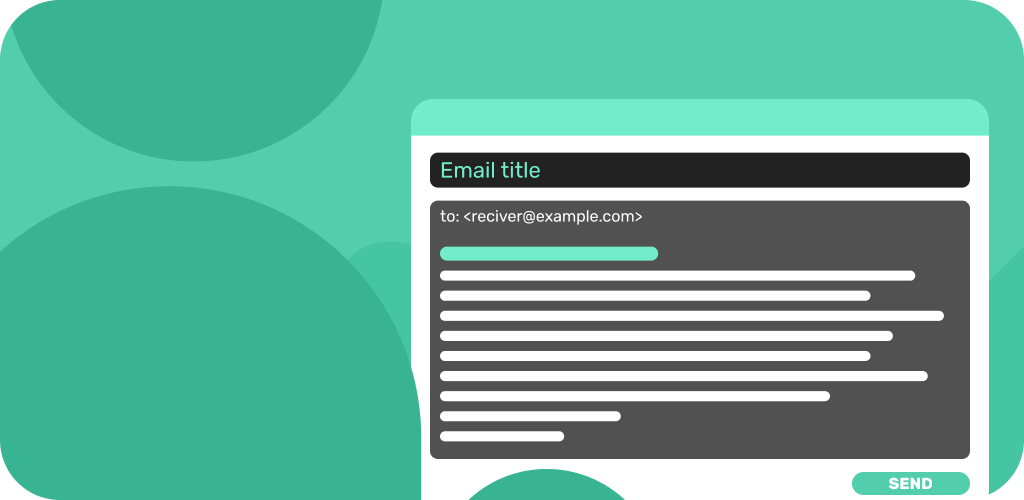
We have been talking at length about foundational things you need to know to have a solid email marketing strategy. However, we have not discussed the most critical thing that sits at the core of everything! The actual email message itself!
You want to write an email that will grab your readers and keep their attention so they will go through everything you have to say. There is no point in sending an email that will be glanced at and instantly closed. So, here are our tips on writing an awesome email that will easily engage your audience. Just do not forget to save your email as a template at the end. You would not want to do it all over again!
A Subject Line That Will Get Opened
What is the first thing you see of an email? Naturally, it is the subject line and sometimes a tiny excerpt of the email next to it. But, most importantly, the subject line! It is the first thing a user sees in their inbox and is the initial point of contact.
When it comes to opening emails–and we are talking out of personal experience here, which we are sure you can relate to–users typically open emails in a specific order: expected emails, emails with an engaging subject line, and then everything else. Nowadays, everyone is trying to nail that thin line between catchy and spammy subject lines. Those few words are the difference between an open and a disregarded email.
With so much competition in mailboxes these days, here are a few quick tips to keep in mind when crafting your subject lines.
- Keep it Short – We all know how fast-paced life can get, right? With that in mind, keep it short. Somewhere around 40-50 characters. The reason for this is it makes it more appealing to read. A short subject line means the recipient can more or less read it at a glance;
- But Keep it Concise – The most important part is to relay your message via those few characters. So, highlight what you want to get across. If it is about a promotion, then highlight it. If it is an information email, ensure the subject of the information is clear;
- Try to Evoke Curiosity – If you are trying to evoke a reaction or a click from your subscribers, then pique their curiosity and interest. A catchy, playful subject line can do that for you! For example, “Christmas Prices in the Summer!” Naturally, you do not need to do this for any others that the customer expects to receive;
- Avoid Overusing Capitals, Symbols, and Emojis – Capitalization is important, but excessive capslock comes across as annoying or desperate. It is the same with too many punctuation signs, symbols, or emojis. Moderation is the name of the game here;
- Avoid Too Many Cliche Words – Creating a subject line that uses no cliche marketing or promotional words is hard. However, try to keep them to a minimum. Otherwise, it just seems generic at this point.
Of course, following these tips depends entirely on the emails you are trying to send. If your audience expects you to use all capital letters and a ton of emojis, then by all means! It all depends on what your website is about and what your readers are interested in. So, we came back around to learning about them!
If you are having a hard time coming up with subject lines, we recommend looking online for some inspiration. We literally googled “subject line inspiration” and got a ton of useful resources to read through. Alternatively, you can ask a chatbot like ChatGPT to generate some for you. Whichever method you choose, remember that they should only be used for inspiration. Use the results and resources to spark your own creativity since you know your website and the emails you want to send best.
Now that you have some awesome subject lines, it is time to work on the main body of your emails.
Making Your Emails Look Amazing
The second most important part of an email is the body, the content. We say the second most important part because everything starts with the subject line. A bad subject line can prevent an email from getting opened altogether, at which point the body does not matter. So, with that in mind, what is important when crafting your email’s body?
To be honest, a lot of what we described in the previous section can also apply here. Here are our tips and advice for creating an email body that will keep your readers interested and engaged.
- Keep it Short and Sweet – From what we have noticed, most people online do not have time to read a long, drawn-out email. Realistically, they should not have to either. An email should be more informative than a text message, with more content, but it should also not take too long to read. Users typically spend up to 8-10 seconds on each email they are interested in. It might sound short, but that is what your conciseness should strive for. The time they allocate to other emails is even lower. So, relay your information in a concise, precise, and direct manner without too many (not none) bells and whistles;
- Logical and Flowing Structure – The best marketing emails have their most valuable or important information at the top. For example, the promotion you most want your readers to see. Then, segment the email clearly so that users can get the gist at a quick glance. Cover images and blurbs make that extremely easy, and users appreciate the clarity and ease of reading;
- Use Links – In case there is information you want to pass on that would otherwise be too bulky to keep the email short and sweet, use links. Links are your friend when creating the structure of your email. They can not only offer further reading to your audience in the form of blogs or knowledge base articles, but they also will help them explore the rest of your website;
- Easy Unsubscription – While you want to retain as much of your audience as possible, you should always include a link for unsubscription. Make the process easy, and your users will love you. Sometimes, people just want to stop receiving emails but keep using your services. There is nothing wrong with that, so do not make it a chore;
- Call Your Readers to Action – CTA (Call-to-Action) is important to any email. You want your readers not just to read the email but to interact with it as well. If you are running a promotion, tell your audience about it and urge them to check it out. A call-to-action is an invaluable piece of the email. It is how your readers become customers and can be anything from a “read here” link to your blog to a “click now” banner to your promotions.
As you can see, all our advice so far has been pretty logical. You might be saying to yourself, “Yeah, I know that already.” That is because there is no magical formula for a successful marketing email. It involves a lot of common sense and some trial and error. When you have an email structure, think about if you, yourself, would read what you have created. If anything does not sit right, tweak it.
As you might already know, we send out a newsletter at the end of each month. Our latest one will show what we mean. It is short and sweet, skimmable, flows easily, plenty of links to what we want to showcase, and easy unsubscription at the bottom.
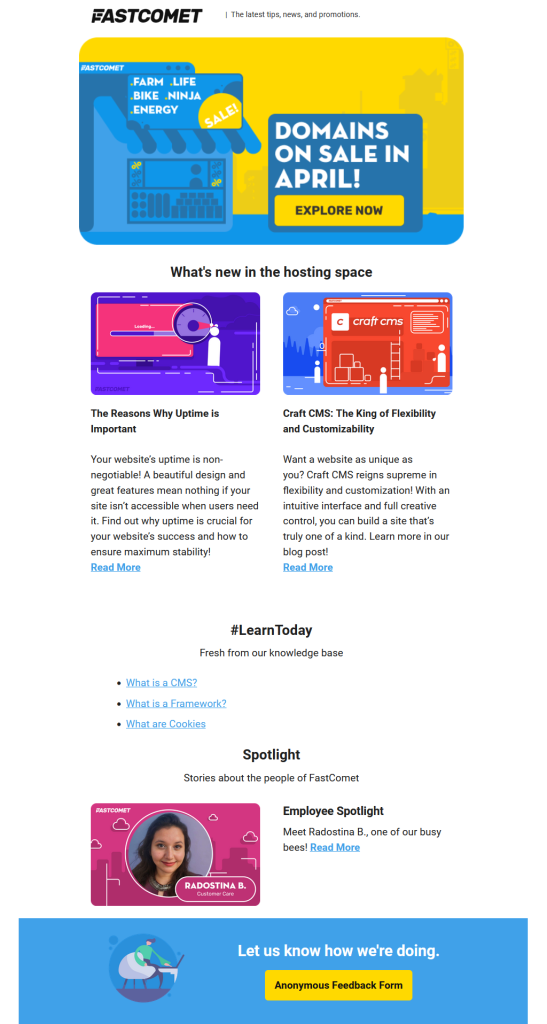
In reality, creating a solid email structure is not difficult. It might take a bit of time and some trial and error, but you will nail it down in the end.
Personalize Your Emails
Our final advice for writing excellent emails is to personalize them. Allow us to clarify: we do not mean personalizing every single email. That would be insanity unless you are emailing only a handful of addresses.
Instead, you might remember that we mentioned segmenting your mailing list earlier. Once you have it segmented according to the criteria you have chosen (purchase preferences, browsing habits, subscription choices, etc.), ensure that each different group receives a personalized email. That means you should have a different email template for each mailing list segment. Here are a couple of quick examples.
Email template for users who only want to receive promotional emails.
Subject: An Exclusive Perk Just for You!
Body:
Hey {First Name},
We won’t clutter your inbox with anything but the good stuff—and this is one of those moments!
For a limited time, we’re offering {specific offer, e.g., “3 months free when you upgrade today” or “25% off your next renewal”}. It’s our way of saying thanks for being part of our community.
{Claim Your Offer Now} → [Insert CTA Link]
This deal ends on {date}, so don’t miss out!
Stay awesome,
{Your Company Name}
P.S. You’re getting this email because you signed up for exclusive promotions. Not feeling it? You can [update your preferences] anytime!
Or how about a notification about a product preference?
Subject: Just In: Fresh Styles for Men
Body:
Hey {First Name},
We’ve been working on something special, and it’s finally here! Our latest collection for men just dropped, featuring {highlight key items, e.g., “sleek jackets, premium tees, and must-have accessories”}.
Shop the New Collection → [Insert CTA Link]
Be the first to grab the latest styles before they’re gone. Ready to upgrade your look?
See you inside,
{Your Company Name}
P.S. Since you’re subscribed to our exclusive promotions, you’ll always be the first to know. Want to update your preferences? [Manage Subscription Link]
Finally, an example template for a new blog post.
Subject: Something to Read: A New Blog Post for You!
Body:
Hey {First Name},
We just published something we think you’ll love! [Blog Title] is now live on our site, and it’s packed with insights on {briefly mention the topic, e.g., “how to speed up your website” or “the latest trends in web hosting”}.
Read it now! → [Insert CTA Link]
Got thoughts? We’d love to hear them! Shoot us a comment and let us know what you think.
Happy reading,
{Your Company Name}
P.S. Stay tuned—more great content is coming your way soon!
See? It is not that hard to create an email marketing template. Yes, they are simple but short and sweet and relay their message instantly. We put the pieces you should replace in the curly brackets with your own content, and the square brackets represent links.
Just do not forget to save your templates!
Find The Right Way to Engage
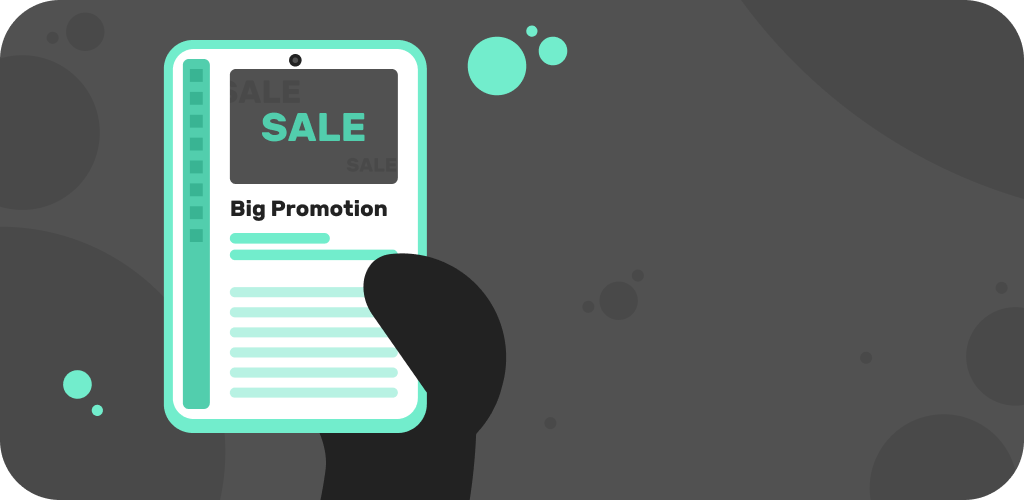
Now that you have an idea of what your audience is like, have segmented your email list, and have the perfect templates ready to go, how do you engage properly with them? Send them an email, of course! But what should be in that email? The stuff they signed up for, obviously! Just ensure you are doing it the “right” way. What is that?
Here, you will have to do your own research. When we say “the right way to engage,” we mean how your audience will appreciate it the most. No matter what, though, our most significant advice is not to be generic. Let your brand’s personality shine, and customize your emails to show that. You can use images or writing styles to achieve that purpose but emphasize your brand. If you are using images, they should all be in the same style. Your language should be consistent and also fitting with the tone of your brand. Being all hyper when you are a law firm is not exactly the most appropriate. Ultimately, users will appreciate the respect you show them by fulfilling their expectations of you and your brand.
Have a look at our newsletter email above again. The image style is consistent, it does not overwhelm with color, and everything is written in a friendly–but not overly so–manner. Now, if you would like to be more formal and conservative with how your emails look, then by all means! Your brand probably requires it. If your audience expects something more flashy and vibrant, then by all means! Knowing those things is how you engage with them “the right way.”
Additionally, showing that you care about your audience is another aspect of “the right way.” For example, if you have a large demographic from a particular country and your email analytics show they open their emails at a specific time, it could be a good idea to send your emails to them at that time. That tells your readers that you are putting in the effort to make reading your emails as convenient as possible.
Another example would be to commemorate milestones. Is someone’s account turning one year old? Send them a quick little email to congratulate them and give them some reward (discount, free item, etc.). Again, that shows your readers that you care and that they are not just some inbox for you to fill. Customers are far more likely to open and read a personalized email than a generic one. Not only that, but it also builds trust and improves your brand’s reputation, and that is immensely important.
Common Mistakes to Avoid
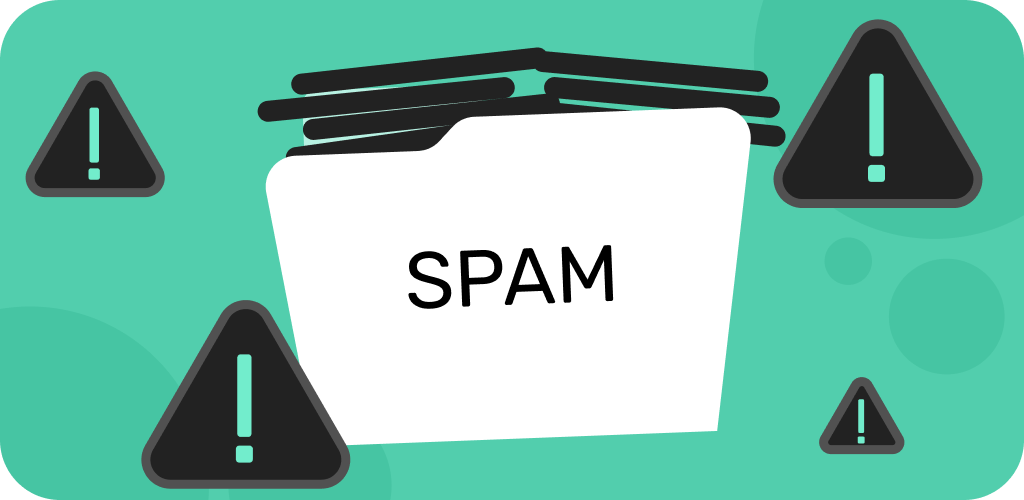
As the final section of this blog post, we want to rapid-fire a few bullet points of mistakes that could put off your audience. With the stigma that already hovers over emails as a whole–being mostly spam and whatnot–audiences can be fickle. So, in order to ensure you are armed with all the knowledge you need, here are some things to avoid when planning your email marketing strategy and when sending your emails.
- Do NOT Overdo It – We mentioned this above, but it bears mentioning again. Moderate how often you send your emails, how the subject line and body are structured, and what the actual content of the email is. By engaging with them, you can find out how often your customers prefer to receive emails. Additionally, you can look for resources online that dive even deeper into email cadence (frequency between sent emails) and tailor your schedules according to your audience and brand;
- Never, Ever, EVER Buy an Email List – This is another thing we mentioned earlier. Still, it is so important we will do so again. Buying a pre-compiled email list will only bring you grief and headaches. Sending emails to people who have not subscribed to them is a big no-no. Check out our article about the topic right here;
- Do NOT Mass Send Emails – Segment your email list. Sending the same emails all the time to your entire email list is not a good idea. Unless that is exactly what your audience expects of you, sending every type of email to every user on your list will quickly upset many of them. That is especially true if you offer an option to opt out from specific email types, yet you still send them. Segment your email list;
- Avoid Letting Your List Stagnate – Sending emails to inactive or uninterested addresses can negatively affect your sender reputation and brand. Keep an eye on your email campaign platform and weed out the addresses that have not engaged with your emails for a while;
- Unsubscribing Should NOT be a Headache – Instead, it should be as easy as clicking the unsubscribe link and following a couple of steps. If a person wants to receive your emails no longer, then they should not be held hostage via a ludicrous unsubscription process. While that might stop them from unsubscribing, it will erode their trust in your brand. That in turn will cause them to designate your emails as spam. Email service providers take their spam protection very seriously, so if too many users do that, you might get blocked by an entire ESP. Not good;
- Scoffing at Email Analytics is a Bad Idea – Email campaign platforms have analytics for a reason. Keep an eye on them and use the data you see to tailor and adjust your marketing strategy. Invaluable data like open rates and link click rates will help you in the long run;
- Try to NOT be Rigid – Finally, be flexible. Run tests, survey your audience, and find out what works best. If you notice a tactic or email is no longer as potent as it used to be, adapt. Stagnation should be avoided, which is why more prominent companies have specialized people who deal with email marketing.
Many of the things we mentioned here have already been discussed above but in the “do this” sort of way. Nonetheless, we figured it was a good idea to show them in the opposite light to contrast the differences. As for the other “do nots,” we think they should round out your arsenal of knowledge and give you a solid foundation to stand upon when planning your strategy.
Email Marketing is Still Vital
Despite emails being old enough to be someone’s great-grandfather, they are still as vital as they have ever been. They are an excellent method of communicating with a broad audience. Additionally, the marketing opportunities email offers are immense due to its ease of use, relatively low cost, and the tremendous outreach it can have. It is not wrong to say that most emails are spam. However, the ones that are not are email marketing done right.

